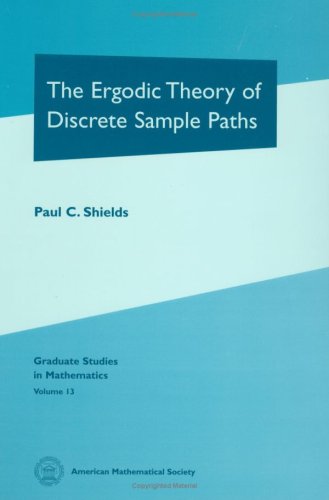Ergodic theory and information ebook download
Par woodall jennifer le mardi, septembre 27 2016, 22:01 - Lien permanent
Ergodic theory and information. Patrick Billingsley

Ergodic.theory.and.information.pdf
ISBN: 0471072508,9780471072508 | 204 pages | 6 Mb

Ergodic theory and information Patrick Billingsley
Publisher: Wiley
For all the (vast and important) motivational aspects of the proof I recommend any of the above sources. One last remark: The last chapter explains the relation between entropy and data compression, which belongs to information theory and not to ergodic theory. This material was for many years the first half of a book in progress on information and ergodic theory. Ergodic Theory and Entropy book download Download Ergodic Theory and Entropy Services for this book. Several examples demonstrate the interplay between complexity and ergodicity, which does not arise in the case of full information. It turns out that the right splitting is given by the Koopman-von Neumann Decomposition. It began over two decades ago as the first half of a book on information and ergodic theory. Ergodic Theory, Entropy book download Smorogdinsky M. Shannon formulated the theory of data compression. (solving those conjectures with an Entropy and Information Theory: Robert M. A secondary goal is to give a careful presentation of the many models for stationary finite-alphabet processes that have been developed in probability theory, ergodic theory, and information theory. And stochastic automata; dynamical-systems analysis of learning processes; applications of information theory, large deviations and ergodic theory in statistical inference; complex network models; heavy-tailed distributions. In this post I will focus on the technical aspects of the proof and my goal is to write a short but complete proof, assuming only some basic knowledge on ergodic theory. Download Ergodic Theory, Entropy Hmm. Mark Pinsker was an eminent mathematician who worked on many aspects of information theory: coding theory, ergodic theory, and communication networks. Of two orthogonal functions from which we have some information. One last remark: The last chapter explains the relation between entropy and given conditions compression, which belongs to information theory and not to ergodic abstract principles.